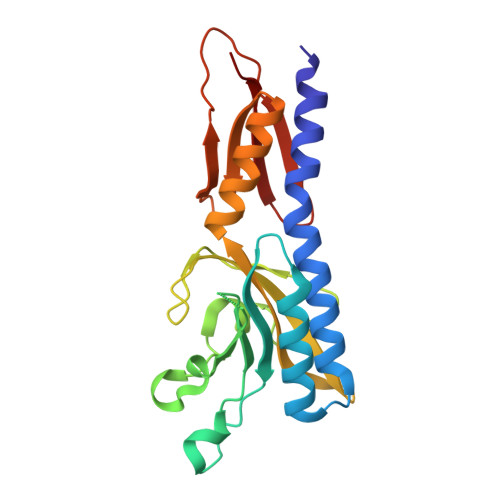Structure-function studies of Vibrio cholerae quorum-sensing receptor CqsR signal recognition.
Guarnaccia, A.M., Steenhaut, A.D., Olenic, S.D., Na, J., Perez, L.J., Ng, W.L., Neiditch, M.B.(2025) PLoS Pathog 21: e1013447-e1013447
- PubMed: 40906767
- DOI: https://doi.org/10.1371/journal.ppat.1013447
- Primary Citation of Related Structures:
9NIA, 9NIT, 9NIV, 9NJ8 - PubMed Abstract:
Ethanolamine signaling through the transmembrane quorum-sensing receptor CqsR influences Vibrio cholerae niche recognition and host colonization. In this study, we present a comprehensive structure-function analysis of CqsR. Specifically, we have determined X-ray crystal structures of the CqsR periplasmic domain bound to the signaling agonist ethanolamine and its analogs, serinol and L-alaninol, as well as the ligand-free (apo) form of CqsR. The periplasmic ligand-binding domain of CqsR is a Cache domain, the most prevalent extracellular sensory module in prokaryotes. Our findings provide a rare structural comparison of ligand-bound and unbound states of a Cache domain receptor. Coupled with thermodynamic binding assays and genetic analyses, these structures elucidate the molecular basis of CqsR ligand specificity. This study not only advances the understanding of Cache domain function but also informs the identification of ligands for orphan Cache receptors and the rational design of signaling agonists and antagonists. Lastly, we discuss ligand-induced conformational changes in the CqsR Cache domains and explore the potential for the existence of additional regulatory ligands.
- Department of Microbiology, Biochemistry, and Molecular Genetics, New Jersey Medical School, Rutgers Biomedical and Health Sciences, Newark, New Jersey, United States of America.
Organizational Affiliation:


















